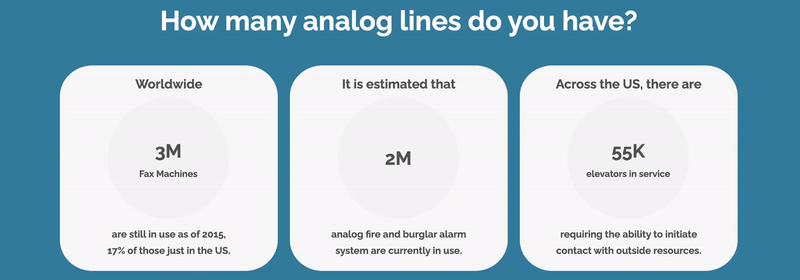If you are a business owner, you would probably agree that telecom is essential to the success of your business. Having an outward-facing business brand that includes a phone number increases your credibility as a business, and while picking up the phone and calling can be somewhat more time-intensive than firing off a quick text or email. It also offers a level of security to your business. If your customers can only communicate with an employee through their own cell phones, if they leave the business, those numbers go with them. And not only that, now your customers have the personal contact information for your staff, meaning your customers can easily reach them after they leave your business and potentially take that relationship with them.
Not only does having a defined telecom technology protect you, but it also facilitates those key relationships that are important to maintaining for the continued success and growth of your business. Chron Magazine in their article “The Importance of Telephone Communication in Business” details the value of voice communications in business even today in our highly text-based world. A few of them are:
- Telephone communication is personal and immediate.
- Communication is more than words, tone of voice is key to accurately convey the message you are trying to send.
Despite this, rising expenses and reduced demand have caused subscription fees to skyrocket, leading more consumers to look for alternatives like VoIP and POTS Line replacement.
If Telecom is Vital, Why is it So Expensive?
While the infrastructure behind telephony is government regulated to ensure equal access and reliability, even more so for remote locations, the infrastructure itself is vast and expensive and mandated by the government that the telcos providing the service and collecting the fees also maintains the network. As the access to the internet became widespread and IP telephony began to meet, or even exceed, the quality and reliability of the analog network, businesses worldwide migrated rapidly to the more cost-effective and agile technology. As recently as the 4th quarter of 2020, AT&T reported that their Business Wireline segment revenue declined by 6% and EBITDA by 8%.
As the analog technology aged and subscribers dropped, telco’s were still required to maintain the copper and it quickly became apparent that to keep the lines running with fewer subscribers meant all users needed to pay more. This example from California highlights the significant upward momentum of telecom.
Caption: Image from technology consulting firm, Tangoe
When the telcos successfully petitioned the FCC to drop the copper line maintenance requirement and enable them to switch their focus to the newer digital solutions. The rest is for the history books.
How to Put The Telecom Fire Out
POTS Lines, or plain old telephone service, is the twisted pair of copper wire that connects your phone to the central office and enables you to reach your intended receiver. But POTS Lines are not limited to voice transmission. POTS Lines also connect:
- Elevator and emergency alarms
- Fax Machines
- M2M
- Modems
- Burglar and fire alarms
- DTMF
- And more…
This means that simply canceling your POTS connection is not going to be the best solution for lowering your telecom costs. So what can you do?
Step 1: Determine how many POTS-dependent devices you have.
It is estimated that there are currently 40 Million POTS Lines still in use, most of those servicing business-critical services as we have listed above.
Before you can determine your best course of action for moving forward, you need to know how many of these devices you already have in your inventory. It is helpful, as well, to have the inventory categorized by location, carrier, contract, department, employees, vendors, pricing, or orders to gain a full insight into how your inventory is being used currently and how much it is costing you. Once you have this, you can make an informed decision on what lines can be migrated to VoIP for a significantly lower price, and which ones are truly dependent on the analog POTS lines.
Step 2: Evaluate POTS Line Replacement Options
The reality is that POTS Lines will be going away in their entirety. So sourcing a POTS Line Replacement device is vital, even if you have not been given notice yet. Carriers have already been issuing sunset notices, informing customers that their POTS Line will be migrated to a digital IP line, such as VoIP, as early as July of 2021. This means that you will have two choices. Since analog devices are not compatible with digital services, this means that you will need to update all your analog devices, internal wiring, and other necessary infrastructure for these to work with a digital service. Or, you need to find a way to connect these analog devices in their current conditions to the digital network with an external device.
Step 3: Make the Move to New Technology with POTS Line Replacement
No Jitter, an industry-leading collection of enterprise consultants, recently reported that AT&T has notified customers that they need to find an alternative to their POTS connection by July of 2021. This means that determining your options to maintain your connection will need to be of the highest imperative while you still have some time. There are several ways you can accomplish this besides a complete rip and replacement of your existing infrastructure, and your trusted communications partner will be able to walk you through those options and determine the best solution for your business.
Don’t wait for the choice of when and how you migrate your telecom to be made for you. Contact us today for your free system assessment and see how you can transition before POTS lines go away for good.









